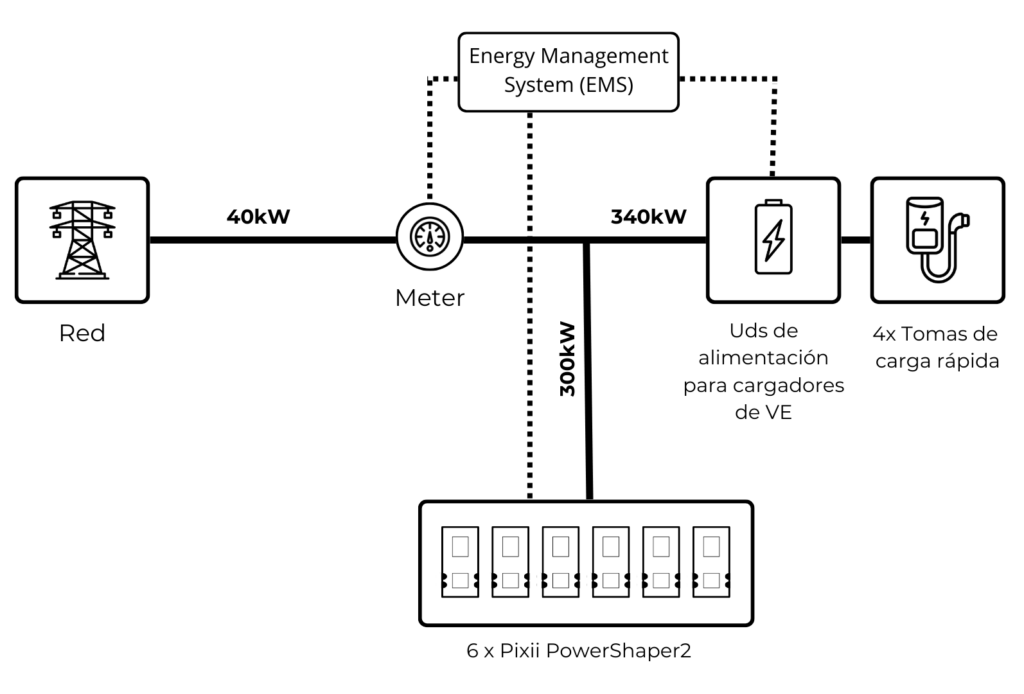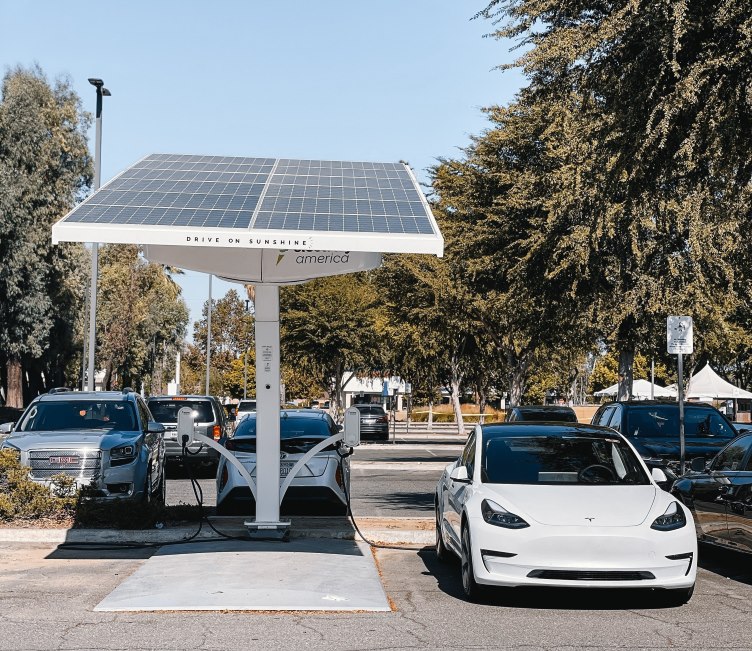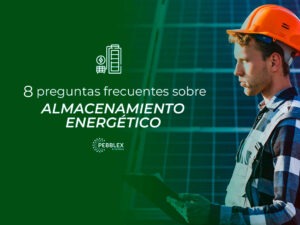In a world that is moving towards energy solutions, electric vehicles (EVs) have become one of the main mobility options of the future. However, mass adoption of electric vehicles still faces a considerable obstacle: the lack of adequate charging infrastructure.
Insufficient power grid capacity to support fast charging is a significant challenge, especially in areas where electrical infrastructure is aging and cannot handle growing demand, ands here where industrial energy storage batteries like Pixii Powershaper come into play.
The challenge: Enabling fast charging in areas with insufficient power grids

One of the main obstacles to the widespread adoption of electric vehicles has been the limited capacity of the electrical grid to support fast charging. Upgrading existing electrical infrastructure to meet fast charging demands is costly and involves a long period of investment and development time.
The charging speed is limited by the capacity of the electrical grid in certain areas, especially those with insufficient electrical grids such as rural or isolated areas.. If the electrical infrastructure does not have sufficient capacity to quickly supply power to electric vehicles, the charging speed is reduced.
In addition to these factors, The contracted power of a facility or service station also plays a crucial role in charging electric vehicles.. Suppose that a station has contracted 100 kW of electrical power. Of this amount, 80 kW is used for regular gas station operation, leaving only 20 kW available to supply electric vehicle chargers. This limitation may hinder the ability to provide fast recharging.
The situation in Spain is a cause for concern, especially due to the delay in its charging infrastructure for electric vehicles. Currently, of the more than 20,000 charging points in the country, 80% offer a power of 22 kW or less, which means there is a shortage of superchargers and the remaining 20% may be very limited by the contracted power of the installation and do not develop all the power they could.
This situation places Spain in a very lagging position compared to countries like France or Germany. This aspect is crucial when considering the purchase of electric vehicles, since it implies not only using them for short trips, but also for long journeys like conventional combustion vehicles.
The solution: Pixii Powershaper
Pixii Powershaper has already introduced a complete solution in Norway that overcomes the challenge of insufficient network infrastructure.
6 Pixii Powershaper cabinets were deployed at Circle K gas stations, offering 300 kW output from a 40 kW grid input. These cabinets were strategically installed on a 400 kW EV charging pad, allowing for simultaneous charging of up to 4 electric vehicles.

The innovative solution implemented in Norway has changed the way fast charging stations for electric vehicles are conceived in the country. By integrating industrial energy storage batteries like Pixii Powershaper, the need for significant changes to gas station electrical infrastructure has been eliminated. This is possible since these batteries can assume the loads of electric vehicles without depending exclusively on the traditional electrical grid, only using the available battery charge.
This strategy not only simplifies the implementation process, but also provides greater flexibility and reliability in power supply for electric vehicle users, marking a significant paradigm shift in the creation of fast charging stations.
Benefits beyond fast charging
Pixii Powershaper's solution not only enables fast charging but also has additional benefits. Its standardized and modular design makes installation, deployment and even relocation quick and easy.. Additionally, smart functionality such as load shift and peak shaving, allows energy storage during off-peak hours, reducing costs and minimizing rates.

Along with these functionalities, we can incorporate the use of a photovoltaic installation to further improve the charging of electric vehicles. By harnessing solar energy, we can optimize the charging of vehicle batteries efficiently.
The photovoltaic installation provides us with a continuous and reliable source of energy, allowing the batteries to be charged. This PV integration not only improves the efficiency of our charging system, but also has the potential to reduce our long-term operating costs..

Beyond the direct advantages of using the Pixii, the electric vehicle charging infrastructure boosts traffic and sales in the different areas where superchargers exist. Fast charging motivates drivers to visit charging stations and make purchases while they wait, which increases sales and creates a constant stream of income for neighboring businesses.
By overcoming the charging infrastructure challenge, the way has been paved for broader adoption of electric vehicles. A solid fast charging infrastructure already exists in Norway and it is only a matter of time before its adoption becomes widespread globally.

BESS Pixii Power Shaper for EV charging stations
Our smart battery has a fully modular design and is capable of performing advanced functions such as Peak Shaving or Load Shifting. At Pebblex we are specialists in energy storage and we have the most appropriate solutions for each project, including electric vehicle charging stations.



